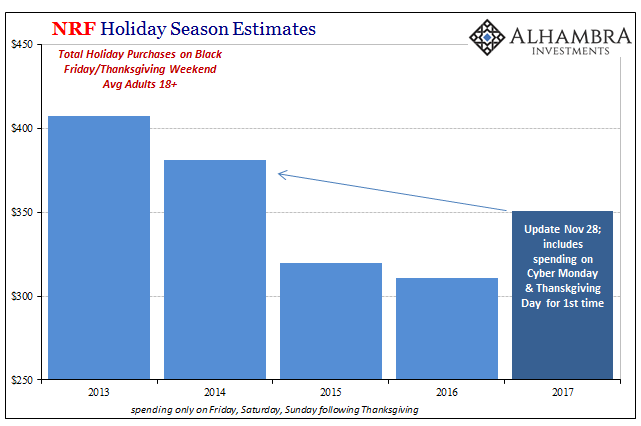I was expecting quite a bit more, but perhaps should not be surprised at what was actually delivered. The National Retail Federation (NRF) after delaying its Black Friday retail spending estimates updated them later Tuesday for the now designated Thanksgiving Weekend. These new figures capture spending activity on both Thanksgiving Day itself as well as the much-discussed Cyber Monday.
The NRF, working through Prosper Insights & Analytics, has, the data, I believe, to go back and reconstruct spending estimates for past years in order to make apples to apples comparisons between them and this year. Instead, all it did was figure what people spent on those five days in 2017, creating a discontinuity in the process. Past data remains limited to Black Friday Weekend (Friday to Sunday, inclusive), and therefore isn’t really of the same basis.

If there is a less than genuine reason for it, it might be because the update for 2017 falls far short in every meaningful way. The NRF suggests the average American adult spent a total of $350.50 during the new five-day period including record stretching Cyber Monday. That’s only 12% more than the average spending during the three-day Black Friday Weekend 2016. More importantly, it’s 8% less than the three-day period in 2014 and just about 14% below only the three days in 2013.
Even without being able to compare 2017 on a like basis with past years, in this case we don’t necessarily need to. The lingering effects of the 2015-16 downturn are clear enough anyway.
That hasn’t stopped the gross mischaracterizations, however, not that anyone should expect anything more.
“All the fundamentals were in place for consumers to take advantage of incredible deals and promotions retailers had to offer,” NRF President and CEO Matthew Shay said. “From good weather across the country to low unemployment and strong consumer confidence, the climate was right, literally and figuratively, for consumers to tackle their holiday shopping lists online and in stores.”












Leave A Comment